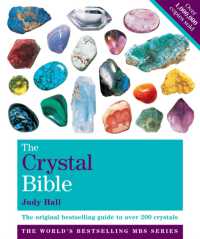基本説明
In this grammatical description, the focus is on the standard varieties of the spoken language, as used in broadcasting, education, and everyday casual speech. The dialectology of the language, and its background as a member of the Mongolic language family, are also dicussed.
Full Description
Mongolian is the principal language spoken by some five million ethnic Mongols living in Outer and Inner Mongolia, as well as in adjacent parts of Russia and China. The spoken language is divided into a number of mutually intelligible dialects, while for writing two separate written languages are used: Cyrillic Khalkha in Outer Mongolia (the Republic of Mongolia) and Written Mongol in Inner Mongolia (P. R. China). In this grammatical description, the focus is on the standard varieties of the spoken language, as used in broadcasting, education, and everyday casual speech. The dialectology of the language, and its background as a member of the Mongolic language family, are also discussed. Mongolian is an agglutinating language with a well-developed suffixal morphology. In the areal framework, the language is a typical member of the trans-Eurasian Ural-Altaic complex with features such as vowel harmony, verb-final sentence structure, and complex chains of non-finite verbal phrases.
Contents
1. Preface; 2. Figures and tables; 3. Symbols and abbreviations; 4. Map; 5. Chapter 1. Introduction; 6. Chapter 2. Segmental structure; 7. Chapter 3. Morpheme structure; 8. Chapter 4. Nominal morphology; 9. Chapter 5. Verbal morphology; 10. Chapter 6. Phrasal syntax; 11. Chapter 7. Clausal syntax; 12. Chapter 8. Complex sentences; 13. Text sample; 14. Sample paradigms; 15. Chart of letters; 16. Bibliography; 17. Grammatical index





